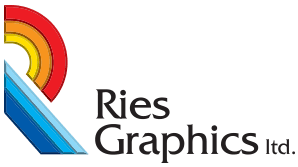Types of Printing Proofs
 Proofs Available with A Ries Graphics Print Design
Proofs Available with A Ries Graphics Print Design
A proof is a preliminary version of a printed piece, intended to show how the final piece will appear. Proofs are used to view the content, color and design elements before committing the piece to copy plates and press. The proof is also the last chance to catch any typos or grammar errors before the piece goes to print.
There are various types of proofs and color matching guides used for the proofing and color matching process. Because proofing and printing presses use different technologies, chemistry, substrates, and processes, they are an important step in the printing process to ensure the final printed piece is accurate. Below you will find information on the different types of proofs used at Ries Graphics, along with pros and cons of each.
Types of Printing Proofs
Hi-Resolution Proof
Hi-Resolution proofs are the best option for viewing color and design elements and are often referred to as “Digital Proofs.”
Pros: Hi-Resolution proofs produce the best representation for final color and show trapping and most other file issues that can’t be seen with other proofing methods. Hi-Resolution proofs are easy to read and are a good guide for the pressman to follow.
Cons: Hi-Resolution proofs are more expensive than most proofs and will not show an exact representation of how imposition and trap lines will actually print.
Plotter Proof
Plotter proofs are hard samples produced on a high-resolution ink jet printer showing how the design created on the computer will print in the final production. Plotter proofs are available in several different sizes.
Pros: When used for imposition, plotter proofs can vary in size and content. Cost is less than a Hi-Resolution proof and it can be trimmed out and/or bound to represent what the final project will look like.
Cons: Plotter proofs are a low-resolution proof which is not used for color matching. Not all trapping and file issues will be seen on a plotter proof.
Soft Proofs (PDF)
Soft proofs provide the ability to view a simulation of your printed piece on a computer screen.
Pros: Soft proofs are inexpensive and quick to produce. They generate quicker turnaround times for the approval process, thus accelerating turnaround times.
Cons: Soft proofs do not produce an accurate color representation, as single pages will not show pagination.
G7 Print to Standard Densities
Prep files are calibrated with the press to industry G7 standards. Color is verifiable based on L.A.B. values.
Pros: Printing to standard densities eliminates the need for costly hi-resolution proofs and can help expedite turnaround times.
Cons: When printing to standard densities, color is subject to variables like paper brightness and finish as well as the inks and coatings used.
Hard Proofs
Hard proofs are typically printed on an output device that is cheaper to print on than a printing press.
Pros: Hard proofs are easy to produce and provide the client with a proof nearly identical to the finished product.
Cons: Since hard proofs are not printed on the same device as the finished product, colors are not 100% identical.
Press Proofs
Press proofs are made on the same printing press the job will be printed on, offering superior comparisons.
Pros: Press proofs are virtually identical to the finished product, ensuring optimal color comparisons.
Cons: Press proofs take a considerable amount of time to set up, lowering turnaround times and increasing costs.
Questions To Ask
Despite what type of proof you choose, it’s important to remember that attention to detail is the key to successful proofing. Below is a list of questions to help guide you through the proofing process.
- Are the photos positioned, cropped and scaled properly?
- Are the bleeds, perforations and folds indicated properly?
- Are content and graphics positioned accurately?
- Is the trim the correct size?
- Are borders correct?
- Are all elements proportioned correctly?
- Any grammar issues or typos?
- Is the pagination correct?
- Are colors accurate?
- Are the screen values correct?
A Ries Graphics printing specialist can help you determine the best proofing method for your project and your budget.





